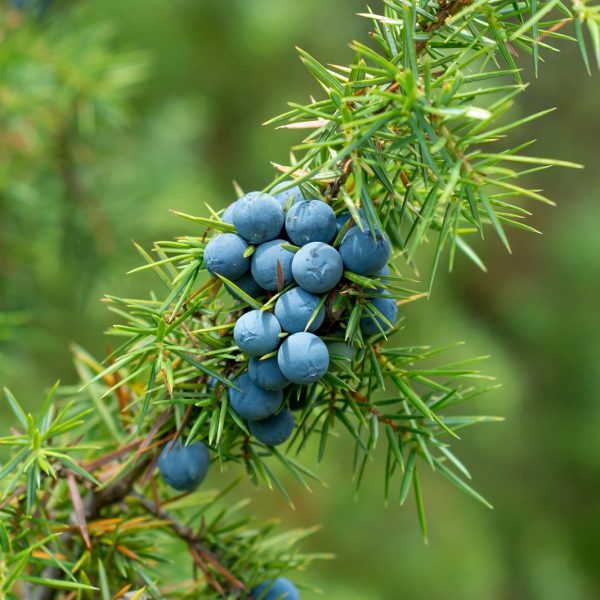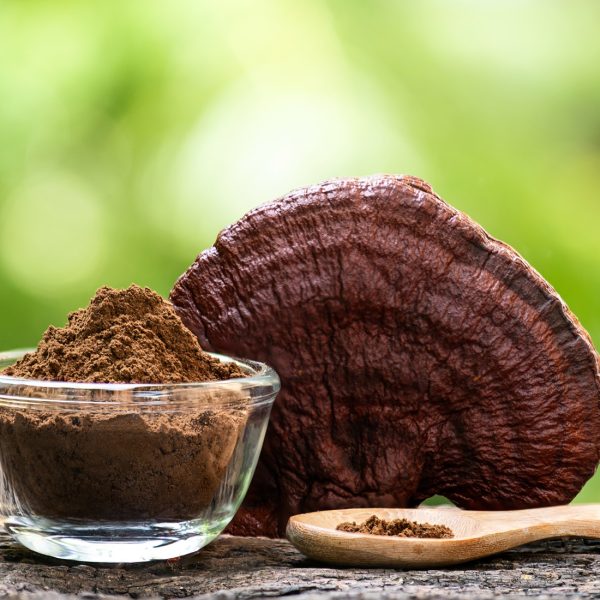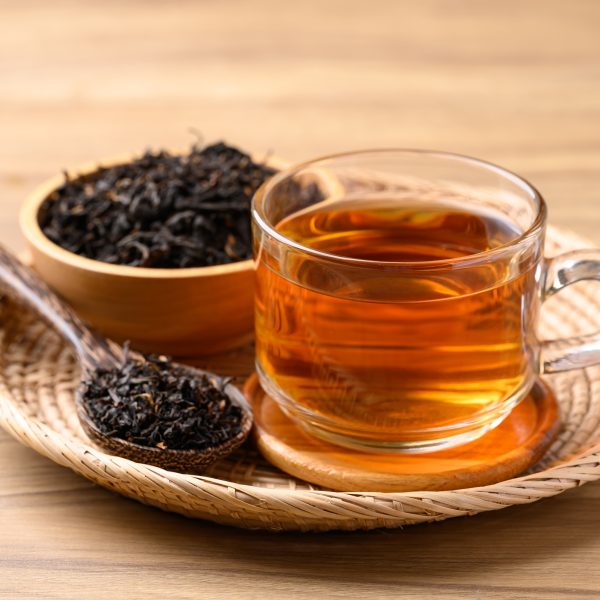-
How does it feel?
Iceland moss has a slightly bitter flavour and a unique texture. In its dried form, it feels crisp and paper-thin, breaking apart easily between your fingers. When it is soaked in water, it becomes soft, flexible, and slightly gelatinous (1). It has a slippery and mucus-like texture, especially when used in herbal infusions. This smooth, mucilaginous consistency is part of what makes it so soothing for the throat and other mucous membranes (2).
-
What can I use it for?

Iceland moss (Cetraria islandica) Iceland moss is primarily used as a demulcent, meaning it helps soothe irritated or inflamed tissues. Its high mucilage content allows it to form a protective and soothing layer over mucous membranes, making it especially useful for the symptomatic treatment of oral and throat irritation as well as dry coughs (2). This soothing action, combined with a relaxing expectorant action, makes it particularly beneficial for individuals experiencing chronic coughs, bronchial irritation, or general dryness in the respiratory passages (3,4).
Iceland moss can also support digestive function. It can help ease gastric and duodenal ulcers by forming a gentle coating on the lining of the stomach and intestines, which helps protect irritated tissues and promote healing (2,3,4). It is also used to relieve symptoms of acid reflux, oesophageal irritation, and inflammation, reducing discomfort caused by excess acidity or mucosal damage (2). The lichen’s demulcent and anti-inflammatory properties work synergistically to calm the digestive tract.
In addition to internal use, Iceland moss is sometimes included in topical skin care formulations. Due to its soothing and antimicrobial qualities, it can be beneficial for conditions such as eczema, dry skin, or skin irritations. In these cases, it can help reduce redness, support skin healing, and restore moisture to damaged or sensitive skin (5).
-
Into the heart of iceland moss
Energetically, Iceland moss is cooling and moistening, making it suitable to soothe dry, inflamed tissues. It has demulcent (mucilage-rich) and bitter qualities, making it both soothing and stimulating for the digestive system (3,4). The essence of the plant can be thought of as one that protects and fortifies, offering calm and resilience in harsh conditions, much like its ability to endure cold and barren landscapes. In plant spirit medicine, Iceland moss is associated with clarity, endurance and resilience (6).
-
Traditional uses

Iceland moss (Cetraria islandica) Historically, Iceland moss served as a vital food source and medicine during times of scarcity in the Nordic regions. It was used by Indigenous Sámi and Nordic peoples as a porridge base or bread ingredient, often mixed with rice or flour (7,8). It was also boiled to create a medicinal broth for respiratory issues, chronic coughs, asthma, and tuberculosis (9). Its bitter properties meant it was used as a digestive aid and appetite stimulant too.
In Iceland, it featured in various traditional dishes, including soups, porridges, sausages, and was even added to skyr (a type of curd) (8). An alcoholic beverage known as Cetraria islandica schnapps was also produced from this lichen. During the beet sugar scarcity in Russia in 1942, Iceland moss was also industrially used to extract glucose (10).
Medicinally, its mucilaginous content makes it a valuable remedy for soothing irritation of the respiratory and gastrointestinal mucosa (3,9). It has traditionally been used to ease dry throats, relieve dry coughs, support digestion, and provide relief from gastric ulcers and acid reflux (2).
-
Traditional actions
Herbal actions describe therapeutic changes that occur in the body in response to taking a herb. These actions are used to express how a herb physiologically influences cells, tissues, organs or systems. Clinical observations are traditionally what have defined these actions: an increase in urine output, diuretic; improved wound healing, vulnerary; or a reduction in fever, antipyretic. These descriptors too have become a means to group herbs by their effects on the body — herbs with a nervine action have become the nervines, herbs with a bitter action are the bitters. Recognising herbs as members of these groups provides a preliminary familiarity with their mechanisms from which to then develop an understanding of their affinities and nuance and discern their clinical significance.
-
Traditional energetic actions
Herbal energetics are the descriptions Herbalists have given to plants, mushrooms, lichens, foods, and some minerals based on the direct experience of how they taste, feel, and work in the body. All traditional health systems use these principles to explain how the environment we live in and absorb, impacts our health. Find out more about traditional energetic actions in our article “An introduction to herbal energetics“.
-
What practitioners say

Iceland moss (Cetraria islandica) Respiratory system
Iceland moss is a relaxing expectorant combining well with lobelia (Lobelia inflata) for chronic respiratory conditions, and forms a key ingredient in a popular formula made into capsules or tablets. According to the British Herbal Pharmacopoeia (BHP), the formula consists of Iceland moss at 250 mg, liquorice at 30 mg and lobelia at 20 mg. It can help to break up tough mucus in respiratory organs and, therefore, can be used for catarrh in the nose, throat or chest. It can be helpful in chronic bronchitis, cough and blocked sinuses (4).
Digestive system
Iceland moss is a helpful remedy for inflammation of the stomach lining. This indicates its use in conditions such as gastritis, hiatus hernia, gastric ulceration and reflux related oesophagitis. It is useful in improving the effects of excess stomach acid but also used in cases of low-grade stomach infections occuring in a context of low stomach acid (3).
-
Research

Iceland moss (Cetraria islandica) Modern research highlights Iceland moss’ antimicrobial, anti-inflammatory, and immune-modulating properties. It contains lichen acids such as cetraric acid and fumarprotocetraric acid, which have been shown to exhibit antibiotic-like effects. It also contains polysaccharides that act as immunostimulants and mucilage that soothes irritated tissues. Studies have explored its benefits in cough syrups, throat lozenges, and gastric ulcer treatments.
Icelandic moss paediatric cough syrup shows good efficacy and excellent tolerance: Results of a post marketing surveillance study
A German post-marketing surveillance study assessed an Iceland moss–based paediatric cough syrup in 75 children and adolescents with mucosal irritation and dry cough. Doctors and parents reported a 60% reduction in cough intensity, with 67% rating efficacy as very good and 75% as good. Tolerance was excellent, with over 90% satisfaction, and no serious adverse effects were observed (11).
Tolerability of Icelandic moss lozenges in upper respiratory tract diseases
A large multicentre study evaluated two lozenge formulations (80 mg and 100 mg aqueous extract) in 3143 children suffering from upper respiratory conditions. Clinically, 39% fully recovered and 55% improved over 1–2 weeks. These outcomes support a favourable safety and tolerability profile. Only 1.8% experienced mild, transient adverse reactions, such as minor itching or nausea (12).
In vitro and in vivo immunomodulating effects of traditionally-prepared extract and purified compounds from Cetraria islandica
Research has demonstrated that aqueous extracts of Iceland moss exhibit significant immunomodulatory properties. This study showed that the polysaccharide lichenan, found in the aqueous extract, enhances the maturation of dendritic cells, leading to increased secretion of interleukin-10 (IL-10), an anti-inflammatory cytokine. This suggests a potential mechanism for its traditional use in treating inflammatory conditions (13).
Determination of antioxidant activity of lichen Cetraria islandica (L) Ach
This in vitro study showed that Iceland moss has the potential to have significant antioxidant activity, surpassing Vitamin E (alpha-tocopherol) in inhibiting lipid peroxidation. It showed that the free radical scavenging ability of the extract was strongly concentration dependent. In vitro and in vivo studies have their limitations, as it is difficult to predict if the effects can be extrapolated to humans. However, there is value in knowing that Iceland moss has the potential of being a strong antioxidant (14).
-
Did you know?
Despite its name, Iceland moss is not technically a moss, it is actually a lichen, which is a symbiotic organism composed of a fungus and an alga (9).
Additional information
-
Botanical description
Iceland moss is a lichen with loose branching and fringed segments. It grows in irregular, leafy, flat lobes that are greenish-grey to brownish on the upper surface and grey-whitish beneath, with cup-shaped apothecia (fruiting bodies) often visible at the edges. These lobes are highly branched, sometimes curling slightly, it is 5–10 cm long and about 0.5 cm wide (4).
-
Common names
- Iceland moss
- True Iceland lichen
-
Safety
Iceland moss should be avoided during pregnancy and lactation due to the risk of lead contamination with some products. It is advisable to source this plant from a reputable supplier (15).
-
Interactions
There is no information on the potential interactions of Iceland moss and pharmaceutical drugs (2). There is no information on Iceland moss and CYP enzymes.
-
Contraindications
None known (2)
-
Preparations
- Infusion: This preparation is best for irritated mucosa.
- Decoction: This preparation is good for deeper irritation, beneficial for chronic cough, reflux, gastric ulcers.
- Powder/capsules: Powder of the whole lichen content.
- Lozenges
- Syrup: Rich in mucilage, can be good for children.
- Tincture (alcohol-based extract): Rich in usnic acid and phenolic acids, this preparation can be particularly beneficial for infections and inflammation.
- Topical creams/ointments: For dermatitis, eczema, and irritated skin.
-
Dosage
Tincture (1:5 | 40%)
- Single dose: 1–1.5 ml 3 times daily
- Daily dose: 3–4.5 ml (3,4)
Infusion/decoction
- 1–2 g in 150 ml of water as an infusion or decoction, three times daily.
- Daily dose: 3–6 g
- Let infuse for 15–20 minutes (3,4). If making a decoction, the mixture should be decocted for at least 20 minutes.
-
Plant parts used
Thallus
-
Constituents
- Mucilaginous polysaccharides: Lichenin 40%, isolichenin 10%, cetrarin (3,4,10)
- Bitter lichen acids: Fumaroprotocetraric, protocetraric, cetraric and usnic acids (3,4,10)

-
Habitat
Iceland moss is a lichen native to Arctic and alpine regions of Europe and North America. It is abundant in Iceland, but it also grows in Scandinavia, Greenland, the Alps, Great Britain, parts of Canada and the northern United States. It thrives in poor, acidic soils, often on rocks, tree bark, or tundra, and prefers cool, humid climates with plenty of clean air. Lichens are highly sensitive to pollution, making them natural indicators of environmental health (10).
-
Sustainability

At risk from overharvesting and habitat loss. Read more in our sustainability guide. It is important to highlight that Iceland moss is vulnerable to overharvesting. In some regions, such as parts of Scandinavia, it is considered a protected species, and commercial harvesting is restricted or regulated. It is important to source Iceland moss sustainably, ideally from cultivated sources or certified ethical wildcrafters. Additionally, because lichens are highly sensitive to air pollution, their populations can be impacted by environmental degradation.
Iceland moss on the IUCN Red List
Listed as Least Concern (LC). It has a broad Holarctic distribution and large populations, though some regional declines have been observed due to factors like air pollution, habitat loss, climate change, and overharvesting (15).
Iceland moss on the Norwegian Red List and Finland
Least Concern (LC) in Finland and mainland Norway and Near Threatened (NT) in Svalbard, due to a population decline of approximately 28% over the past century, attributed to habitat degradation, climate change and heavy reindeer grazing (16).
There is no specific listing or trade monitoring for Iceland moss by TRAFFIC nor Nature Serve.
Habitat loss and over-harvesting from the wild are two of the biggest threats faced by medicinal plant species. There are an increasing number of well-known herbal medicines at risk of extinction. We must, therefore, ensure that we source our medicines with sustainability in mind.
The herb supplement industry is growing at a rapid rate and until recent years a vast majority of medicinal plant produce in global trade was of unknown origin. There are some very real and urgent issues surrounding sustainability in the herb industry. These include environmental factors that affect the medicinal viability of herbs, the safety of the habitats that they are taken from, as well as the welfare of workers in the trade.
The botanical supply chain efforts for improved visibility (transparency and traceability) into verifiably sustainable production sites around the world is now certificated through the emergence of credible international voluntary sustainability standards (VSS).
Read our article on Herbal quality & safety: What to know before you buy and Sustainable sourcing of herbs to learn more about what to look for and questions to ask suppliers about sustainability.
-
Quality control
Herbal medicines are often very safe to take; however, their safety and efficacy can be jeopardised by quality issues. So, it is important to buy herbal medicines from a reputable supplier, from sources known to test their herbs to ensure there is no contamination, adulteration or substitution with incorrect plant matter, as well as ensuring that recognised marker compounds are at appropriate levels in the herbs.
Some important quality assurances to look for are certified organic labelling, the correct scientific/botanical name, and the availability of information from the supplier about ingredient origins. A supplier should be able to tell you where the herbs have come from, what contaminants are not in the herb, and what the primary compounds are.
-
How to grow
Growing Iceland moss is challenging but possible under the right conditions. It needs a cool, humid climate with clean air, with frequent misting or a foggy environment. It requires partial to full sunlight, and it photosynthesises via its algal partner. It grows best on acidic rocks, bare soil, or tree bark, and it is best propagated through fragmentation (17).
-
Recipe

Iceland moss tea (Cetraria islandica) Iceland moss cough and digestive tea
Ingredients
- 1 tbsp dried Iceland moss
- 1 tsp liquorice root (optional, for added sweetness and respiratory support)
- 1 tsp fennel seeds (optional, for digestion)
- 2 cups water
Instructions
- Soak Iceland moss in cold water for 10–15 minutes to remove bitterness (optional).
- Drain, then add moss and other herbs to a saucepan with water.
- Bring to a boil, then reduce to a simmer for 15–20 minutes.
- Strain and drink warm.
This tea is soothing for sore throats, coughs, and digestive irritation. It has a mild earthy flavour with a slightly bitter finish unless pre-soaked.
-
References
- Bone K, Mills S. Principles and Practice of Phytotherapy: Modern Herbal Medicine. 2nd ed. Edinburgh Churchill Livingstone, Elsevier; 2013.
- Committee on Herbal Medicinal Products (HMPC). European Union Herbal Monograph on Cetraria islandica (L.) Acharius s.l., Thallus. European Medicines Agency; 2014.
- Mills S. The Essential Book of Herbal Medicine. London, UK: Penguin Arkana; 1993.
- Hoffmann D. Medical Herbalism : The Science and Practice of Herbal Medicine. Healing Arts Press; 2003.
- INCI Guide. Plant Extracts & Derivatives. Accessed June 11th, 2025. https://inci.guide/plant-extracts-derivatives
- Salem Supply Co. Exploring the mystical realm of Icelandic moss: traditions and magical uses. Accessed June 11, 2025. https://www.salemsupplyco.com/exploring-the-mystical-realm-of-icelandic-moss-traditions-and-magical-uses
- Laponia. Iceland moss habitat map. Accessed June 3rd, 2025. https://laponia.nu/en/habitatskarta/iceland-moss/
- Food Lore Central. Iceland moss. Accessed June 3rd, 2025. https://foodlorecentral.com/strange-eats/iceland-moss/
- Grieve M. A Modern Herbal. Botanical.com website. Accessed May 28th, 2025. http://botanical.com
- Sánchez M, Rodríguez J, González-Burgos E, Gómez-Serranillos MP. The genus Cetraria s. str.—a review of its botany, phytochemistry, traditional uses and pharmacology. Molecules. 2022;27(15):4990.
- Mehl S, Vestweber A-M. Icelandic moss pediatric cough syrup shows good efficacy and excellent tolerance: results of a post marketing surveillance study. J Pharmakol Ther. 2008;17:107-112.
- Hecker M, Völp A. Verträglichkeit von Isländisch-Moos-Pastillen bei Erkrankungen der oberen Atemwege – multizentrische Anwendungsbeobachtung mit 3143 Kindern. Forsch Komplementarmed Klass Naturheilkd. 2004;11(2):76-82. https://doi.org/10.1159/000078228
- Freysdottir J, Omarsdottir S, Ingólfsdóttir K, Vikingsson A, Olafsdottir ES. In vitro and in vivo immunomodulating effects of traditionally prepared extract and purified compounds from Cetraria islandica. Int Immunopharmacol. 2008;8(3):423-430. https://doi.org/10.1016/j.intimp.2007.11.007
- Gülçin İ, Oktay M, Küfrevioğlu Öİ, Aslan A. Determination of antioxidant activity of lichen Cetraria islandica (L.) Ach. J Ethnopharmacol. 2002;79(3):325-329. https://doi.org/10.1016/s0378-8741(01)00396-8
- Natural Medicines Database. Iceland moss. naturalmedicines.therapeuticresearch.com. Published 2024. https://naturalmedicines.therapeuticresearch.com/databases/food
- International Union for Conservation of Nature. The IUCN Red List of Threatened Species. Accessed June 12, 2025. https://www.iucnredlist.org/
- Artsdatabanken. Norway’s Biodiversity Information Centre. Accessed June 3rd, 2025. https://www.artsdatabanken.no
- Botanikks. Cetraria islandica. Published 2025. Accessed June 3rd, 2025. https://www.botanikks.com/plants/cetraria-islandic






































